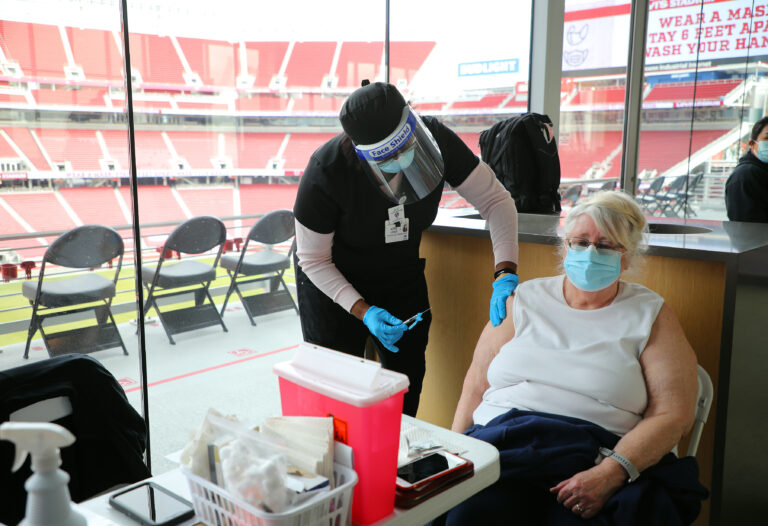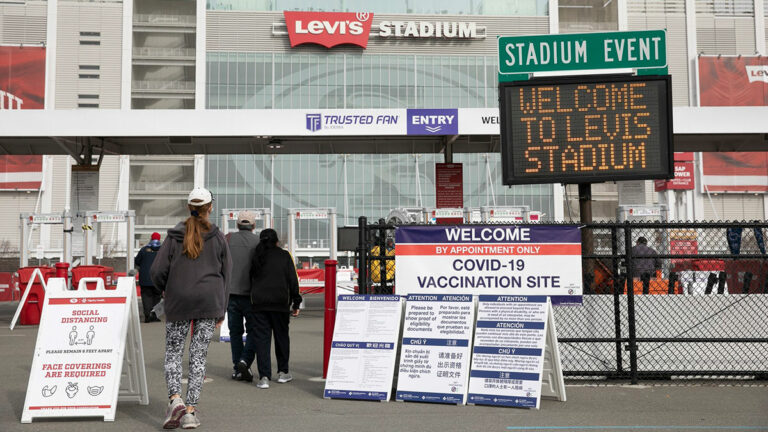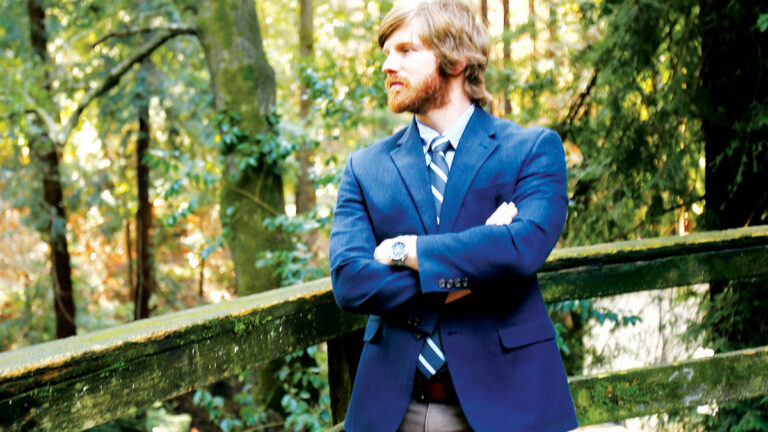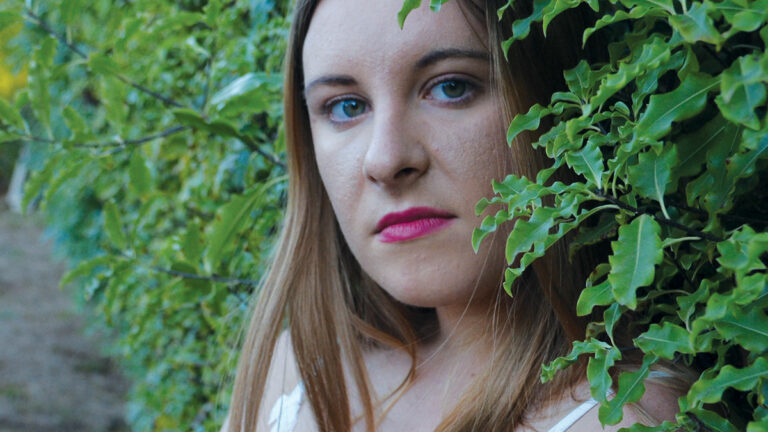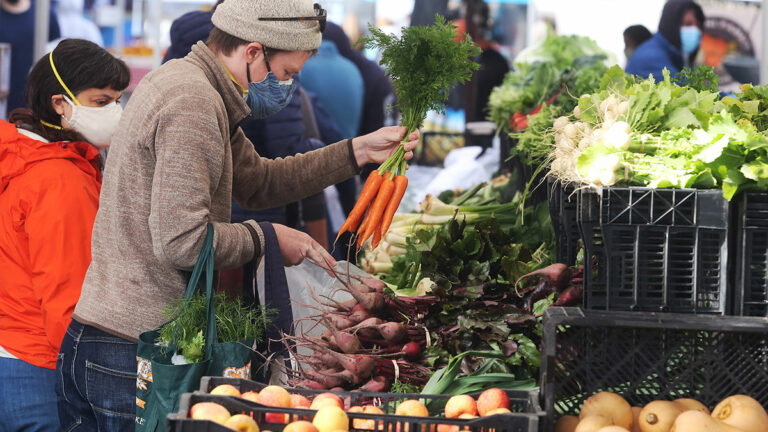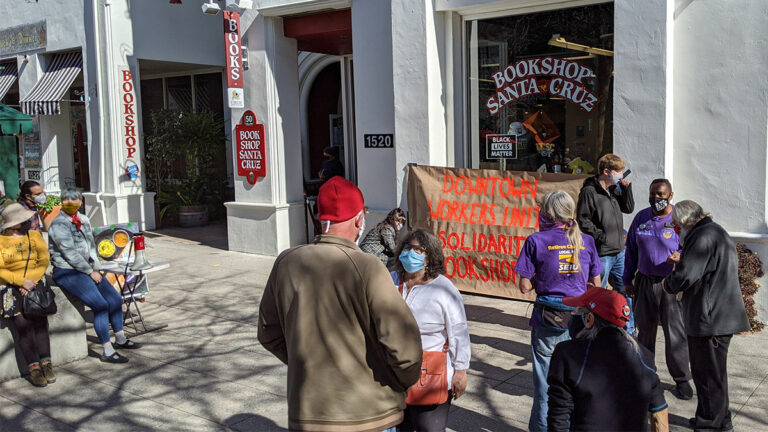On a sunny afternoon back in early December, Zoe Banks, a mother of two who works in communications, sent a prescient text to a friend in Boulder Creek. “Sad to let you know we’re moving out of the area,” she wrote. “Come for the fires, stay for the debris flow just isn’t on my mood board for 2021.”
After evacuating during the CZU Lightning Complex fire, and concerned about landslides following rains, Banks and her family put their home across the street from Boulder Creek Elementary—where she had envisioned sending her children to school—on the market.
“When we bought the house I remember thinking, ‘Are we crazy to buy in the mountains right now?’ But it was two blocks from the fire station, and built in 1863. It stood this long. Neighbors said, ‘It’s close to the fire department; you’ll probably be fine.’”
Structurally, it is. The burn scar has not led to the debris flow that local officials feared—yet. But evacuating the CZU fire left emotional scars that couldn’t be reconciled.
Banks remembers searching online from their temporary landing pads in Capitola and then Reno during the fire to see if their house was still there, and the difficulty that came with this uncertainty. “Every time there’s an evacuation, you’re checking Nextdoor and Facebook, hearsay, to try and see if the house is still standing, if there’s debris flow … I don’t have it in me to keep putting my family through that,” she says. Living with her husband, mother, two toddlers and pets, not to mention dealing with all of this during a pandemic, made the thought of another evacuation just too much.
“Looking ahead, do I want to do this all season long? The risk [of debris flow] is there for two to five years,” she says. She remembers being particularly disturbed by an L.A. Times article that predicted “these mountains could turn to jelly.”
“Whether there is a risk or not changes depending on who you talk to,” Banks says. “If debris flow wasn’t a thing, we’d still be there. We planned to raise our kids there.”
Banks looked at a map of the U.S., thinking, “Where can we go where we won’t be at risk of debris flow, wildfires, hurricanes or tornadoes?” and landed on Tucson, Arizona.
“No trees, no earthquakes, houses made of bricks,” she says.
The family hit the road, toddlers and chickens in tow.
Boulder Creek Fire Chief Mark Bingham admits that with the lack of mudslides after the most recent storms, “we dodged a bullet.”
“The weather moved off the Santa Cruz Mountains, where it was projected to hit hard. Salinas and Monterey had weather events we avoided,” he says.
Though Bingham emphasizes he’s “not a weather expert by any means,” he is deeply familiar with the area and its ecosystem, having grown up in Ben Lomond and moved to Boulder Creek at the age of 18. As both a first responder and resident, what he’s seeing now is different from what he remembers, a time when the rains began around Halloween and continued through March—the classic mild, wet winter of Mediterranean climates.
“It doesn’t seem to be that predictable anymore,” he says. Rains arrive less frequently and in higher concentrations. Bingham’s inclination from “growing up here and talking with local and national weather folks” is that the rains we could see will likely be “infrequent but heavy and major showers.”
In terms of risk to local residents and structures, what happened—or in this case, didn’t happen—during the last storm can’t be seen as a predictor of what may happen in the future.
“The recent storm met or exceeded the debris flow rainfall intensity thresholds in some (but not all) areas in the burn scar,” Santa Cruz County Geologist Jeffrey Nolan tells GT via email, “but no debris flows were observed. The existing models aren’t well calibrated to the local area, so there was always some question as to how accurate the rainfall thresholds would be.”
As rainfall thresholds are reassessed, Nolan points to a partial reason the region escaped the dreaded debris flow this time around: “The ground was very dry prior to this recent storm, and the mountains soaked up the rainfall like a sponge.” With the ground already wet, though, “it is possible that the future storms will produce a different result.” Nolan’s expectation, given changing weather patterns, “is to see more fire seasons like last summer going forward.”
New Reality
Because of that, the Boulder Creek Fire Protection District is preparing not only for the fires, but also the ongoing threat of debris flow in the aftermath.
“It’s a new discipline, a new type of rescue a lot of agencies haven’t been trained to do,” Fire Chief Bingham says. “We’ve had a couple of historical events where large pieces of land move. Human factors created those situations. The fire created this one. It’s a different picture, a larger and broader area. We saw that we’d better gear up for it. We gathered experts from around the United States: Southern California, the Anchorage [Alaska] Fire Department, the East Coast, to train all the Boulder Creek firefighters.”
In addition to training, new equipment is arriving at the station: dry suits, chest waders, Tyvek suits, “so we can layer up and down for whatever the operational need is, practicing how we would access, climb over or through a mudslide or debris flow once it stopped moving—a training experience we haven’t tackled before.” Four wheel drive and high-water vehicles have been procured, with sufficient clearance underneath to climb over mudflows that Type 1 Fire Engines could not. And emergency responders are training with K-9 teams, as dogs can cover “a lot more ground” during a rescue effort.
Technology also aids in preparation and response: easy access to zone mapping online for residents, map editing and creating, and QR codes for maps to quickly orient responders coming from out of the local area. “If a neighborhood moved down and over, we’d be able to say where it should be, it shifted and moved down over here,” for search and rescue, Bingham explains.
In this massive effort, Bingham appreciates all the agencies that have pulled together and the resources and time to plan for the threat of debris flow prior to an emergency situation. “A lot of events you could plan for,” he says, “but how many have scientific data with a high probability of happening?”
Residents are undertaking and aiding in preventive efforts, too, shoveling sand into bags the fire department provided and delivering these to three different sandbag bunker locations in the district, which are open to the public. “We’ve gone through six thousand bags,” Bingham says. “That’s the mountain folks being proactive, taking care of their land.”
Bingham’s advice for his neighbors, primarily, and above all: “If we make an evacuation order, we hope every resident would heed it.”
UNINSURED FUTURE
Some residents like Banks may have had enough, but Santa Cruz Redwood Homes realtor Logan Andren has seen that an influx of homebuyers to the Santa Cruz Mountains has not been discouraged, even as insurance is harder to come by.
“I’ve seen stories on Boulder Creek Neighbors, the Facebook community we have up here, always on top of things and willing to lend a hand, of private insurance companies cancelling coverage and refusing to cover new homes,” Andren says. “I just purchased a small home, and had to go with the California FAIR plan to cover fire—an insurance association that offers coverage to high-risk homeowners and renters in the state” who have trouble obtaining it otherwise.
“Inventory is low and we’re in a seller’s market with limited competition,” Andren adds, with interest rates at historic lows and “many people working from home indefinitely.” Andren has continued to see many “who have high-tech jobs up north—Palo Alto, San Jose, Campbell, Redwood City” moving to the Santa Cruz Mountains for the “ability to own a home for half to a third of what they would be paying in Silicon Valley.” He points to the recent repaving of Highway 9 to Saratoga, with low commute-time traffic even pre-Covid, with its scenic commute as a further allure. A Felton home received 10 offers in a week, sold for above list price, all cash, close to $900,000, Andren says. “Fires and rain have not deterred them.”
It’s a phenomenon Banks experienced firsthand. She received two offers above asking price even though the first week the house was for sale there was no power, and mandatory evacuation was ordered in the second week. A neighbor’s house, she says, sold in four days. Banks understands the appeal. “It’s a desirable place to live if you can navigate those threats,” she says. “But I’m not willing to gamble my kids’ or mom’s safety, so if they say evacuate that’s what I’m going to do.”
Realtors are required to disclose if listings are in wildfire and debris flow zones, Andren says. “Homes below burn scars tend to be prevalent to mudslides,” he says, “and since so many trees were destroyed, those root systems that were holding up hilly areas have been compromised.” Andren also explains to prospective buyers the regular upkeep those moving in from more urban areas probably haven’t had to deal with—“from blowing the roof to getting the septic system pumped every three to five years.”
In It For the Long Term
One such Boulder Creek resident, Roopam Lunia, moved to the area in July 2020 with her husband and toddler during a high-risk pregnancy and got what she calls “a crash course in what can go wrong in the mountains in six months”—heat waves, power outages and fires. Neighbors who had lived in Boulder Creek for 40 years, Lunia says, told her they had never seen anything like it before. “We were probably pretty naïve when we moved to the area,” she says. “We were living in Silicon Valley, and we’d been looking for four years. We wanted to live here.”
Previously in an apartment, Lunia wanted land and space to raise a family, and had always loved the mountains. When Covid-19 hit and her husband began working from home, he didn’t have to be close to his workplace. “We started looking, the house popped up, it had been on the market for a while, and we moved,” Lunia says.
A month and a half later, the heat wave hit. “I was pregnant, we had no air conditioning, it was 110 degrees outside. I thought, ‘This isn’t going to be as easy as we thought it was going to be.’ That was the first challenge we had.”
Then came the fires. “I saw fire hit 236 at Big Basin and started packing a bag. Within a couple hours, we had to go.” They ultimately stayed with family in Fresno. Lunia’s house was safe on the opposite side of the scar zone. Soon, “winter hits, we have power outages, rainstorms. We’re not in the debris flow zone, we’re on the opposite side of the river on the east, but neighbors told us about the possibility of the river jumping its banks, and at eight-and-a-half months pregnant, we didn’t want that to happen.” They again evacuated to Fresno, grateful for having family relatively close by.
“It seems now as if we’re okay,” she says. “When we moved in, neighbors told us, ‘Clear out the fire hazards and get an alternate power source.’ We got the property cleared and invested in solar since we’re in this for the long term; we figured put money in now and make sure it works out. Our next thing is going to be getting an air conditioning unit put in because of last summer. We weren’t expecting that heat.” Lunia and family are taking it in stride. “The 5% of the time when it hits the fan, you have to roll with those storms, go with it.”
The silver lining in it all has been neighbors banding together. “I know more people out here in seven months than 10 years in Silicon Valley. The neighborhood comes together to support one another and make sure everyone has what they need to get through everything.”
Even though they haven’t been able to meet in person because of Covid-19, Lunia cites the amount of support and fear-assuaging her neighbors have provided online, such as offering to take her in their four-wheel drive if the bridge washed out when she had to get to the hospital to have the baby. They happily answer mountain-newbie questions—“‘Is this rain normal? Is 10 inches okay?”
“We listen to the chatter of the local Facebook group to find out what’s going on,” Lunia says. “Road closures, trees down—you rely on people, and that’s a change that suits us really well.”
It’s a responsive group. A post soliciting experiences for this article to the same Boulder Creek Facebook community Andren and Lunia mention yielded a slew of rapid responses from residents both current and former, longtime and new. Their stories spanned generations, from those with deep roots in the region to the most recent arrivals. They shared why they left or chose to stay put. Some had recently bought homes, others lost longtime family properties to fire. One couple still plans to buy instead of rent when they can afford it. Another who left longs to return, saying she left her heart in the mountains. While it would be impossible to include every story here, the compendium provides a testament to a community grappling with unprecedented threats from nature and becoming even more tight-knit in the face of it all: wildfires, heat waves, heavy rainfalls, potential debris flow, and other events that are, based on what experts have said, only likely to increase in frequency over time.
Training Days
What restoration ecologist Dr. Grey F. Hayes would like to see for these residents—along with more normal-times maintenance tasks like roof-blowing and septic-system pumping—is specific training on what living in wildfire and potential debris flow zones entails, and modes of responding. “The central tenet is to have people become indigenous to where they are living,” he says.
Recent debris flow evacuations “went a little broader than they needed to,” Hayes believes, in the wake of some of the fire evacuation orders coming too late. “Safety first, though,” he says.
The longtime North Coast resident, who lectures on land restoration and management at UCSC and publicly at the MAH (though those are currently on pause during Covid-19), points to the 2018 Montecito mudflows and cultural memory of the 1982 Love Creek landslide in Ben Lomond that killed 10 people as precedents for the degree of caution being taken now, along with governmental constructs like “evac periods’” to decide what to do.
“I make it my central focus to think about how people live on the land and respond to these kinds of things,” he says.
Hayes did not evacuate his home to the west of Boulder Creek, a few miles inland from Davenport, during the CZU Lightning Complex fire. But he is uniquely equipped to deal with these catastrophes. It’s a story he has documented in harrowing detail, replete with a timeline and photographs, in a post titled “CZU Lighting Fire Recap” at Molino Creek Farm’s website. Still, Hayes is reluctant to share his story out of concern that people without his background in fire and ecology might attempt similar feats: “I stayed put for the fire and protected my house, but it wasn’t in isolation,” he says. “I had a plan. My knowledge was backed up by the Bureau of Land Management fire chief and others who said, ‘You know what you’re doing.’ Do you stay or do you go? It’s dangerous stuff. People have egos that extend beyond their skill level.”
Hayes has trained with Cal Fire and worked on prescribed burns as a natural steward for UCSC, so was prepared for worst-case scenarios. Ultimately, he and a neighbor saved most of the structures on the property.
But it didn’t come without cost, either. His shoulder still hurts from dragging the fire hose. His partners in fighting the fire struggle with PTSD.
Still, he says, we must learn to live with the particularities of a Mediterranean climate—atmospheric rivers, dry summers—which are particularly conducive to wildfires. Hayes compares Cal Fire’s operations to being “right up there with Australian and South African” firefighting forces, not coincidental as “Mediterranean climates are fire climates.”
The large-picture issues are both environmental and systemic. Making conservative decisions about zoning and permitting isn’t part of a capitalist reality. Besides, “humans increase fire frequency wherever we go,” Hayes says.
Solutions, Hayes says, rely on mitigation strategies now. “If we want any trees,” he says, the focus should be on landscape-level management, including “prescribed burns and physical labor to manipulate fuels, so when fires come it’s not as bad.” On the individual level, he suggests “training people to shelter in place” and for “reacting to fire, doing prescribed fire,” as the best course forward.
“We need to become as indigenous as the native peoples were here. Native Americans would have known how to adapt to episodic disasters. We’re not there yet. We as a society should be smart toward reorienting people for safer lives,” says Hayes. That includes paying for relocation of those in the path of debris flow, and making zoning changes, he says.
Hayes mentions the Central Coast Prescribed Burn Association as a potential avenue for community involvement in mitigation. As described in a late-December 2020 Facebook post on the Resource Conservation District of Monterey County page, this project of the University of California Cooperative Extension in San Benito County, assisted by the Resource Conservation District of Monterey County, is “a new prescribed burning association … starting with some smaller prescribed fires and will hopefully build to larger, community-driven burns over time.”
Now settled in Tucson, Banks can put wildfire out of her mind, but she does anticipate feeling more heat. “Summer will be brutal,” she says, providing a reminder that nowhere, climatologically, gets off scot-free. “It might be 120 degrees.”
While there is no perfect place from which to face down the effects of climate change, and the lifelong Californian calls it “heartbreaking” to have left, “the relief of not having those worries in the background every time it rains … it’s a nice feeling to not have to be thinking about that in an existential way.”



